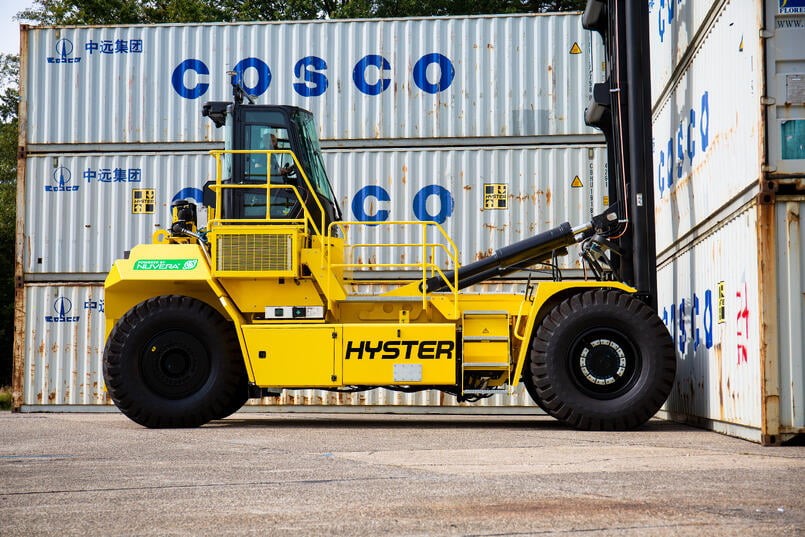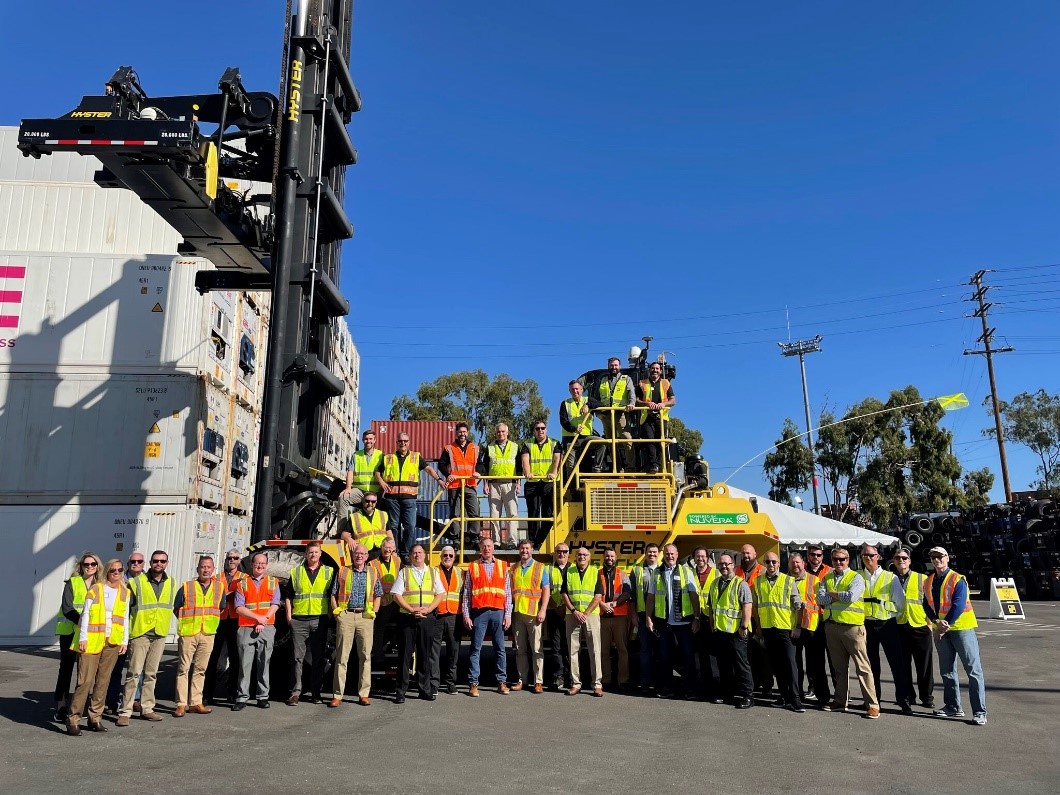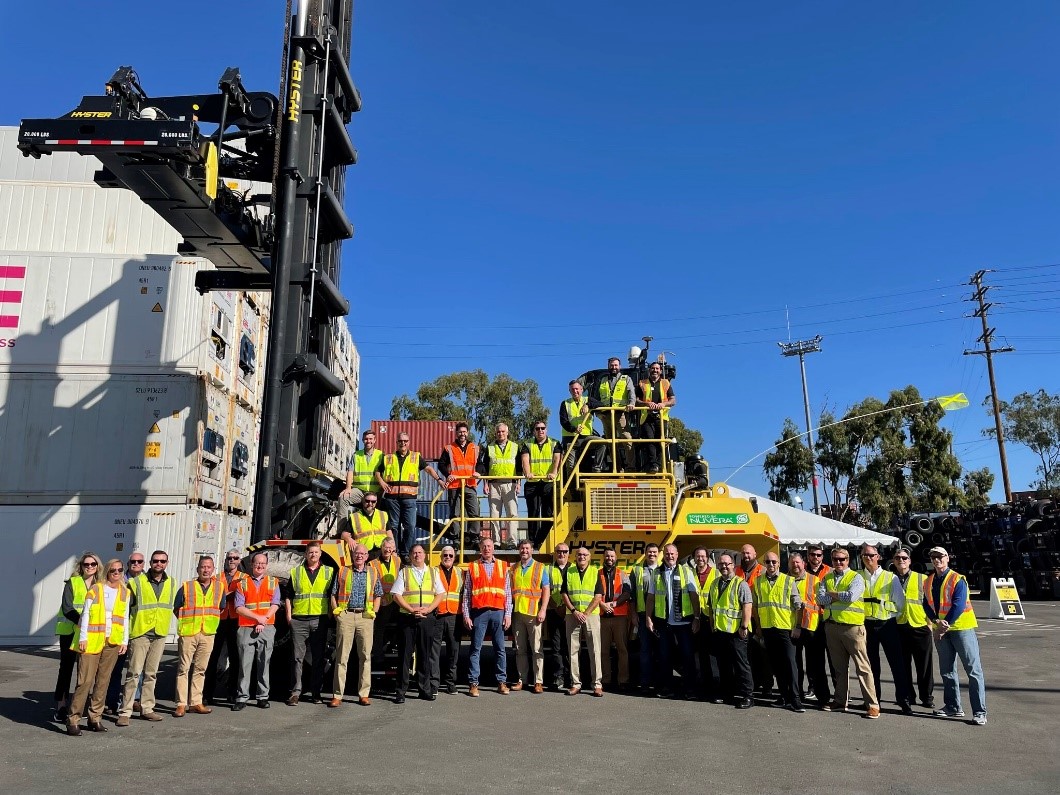Just recently, we proudly announced the launch of the Hyster-Yale Group fuel cell-powered Hyster® top-pick container handler with two Nuvera® E-45 fuel cell engines at the Port of Los Angeles (POLA) in Long Beach, California. In a project funded by the California Air Resources Board (CARB) and managed by the Center for Transportation and the Environment (CTE), the first-of-its-kind machine is being operated by Fenix Marine Services, a terminal operator owned by the CMA CGM Group.

Last summer, CARB passed rules banning the sale of new gasoline-powered cars by 2035 and mandated that dealers ensure zero-emission Class 2b to Class 8 trucks make up an increasing part of sales over the next decade.
CARB now proposes to phase out heavily polluting gasoline and diesel power sources at ports and require that new drayage trucks be powered by clean fuels starting in 2024. Starting in 2025, California would ban trucks powered by internal combustion engines with more than 800,000 miles on them from operating at ports and rail yards.
Truckers point out that the state’s lack of charging stations is a major obstacle to switching to electric. Most battery electric trucks today have a range of between 100 and 200 miles between charges, making longer trucking routes or heavy-duty cycles impractical without proper charging infrastructure in place.
There is another option for vehicle and equipment electrification besides batteries: hydrogen fuel cells. Fuel cells excel at higher intensity applications that must operate throughout the day. High-intensity operations require both higher power output and greater energy storage. Batteries are a challenging option because, at the scale of large industrial machinery, the weight and size of batteries required generally overwhelm the vehicle capacity.
For the fuel cell top-pick, refueling takes as fast as 15 minutes for seven to nine hours of continuous vehicle run time. The hydrogen fuel cell engines work in tandem with an onboard lithium-ion battery to power the drivetrain and the lift directly. To reduce the amount of hydrogen fuel required, the patented energy recovery system recovers and stores energy from braking or load-lowering.
In addition to the POLA top-pick deployment, Nuvera fuel cell engines are powering an electric terminal tractor and an empty container handler to be deployed at Hamburger Hafen und Logistik AG (HHLA) Container Terminal Tollerort in Hamburg, part of Clean Port & Logistics (CPL), an innovation cluster to test hydrogen-powered port logistics equipment. Nuvera will also power a Hyster® ReachStacker at the Port of Valencia as part of a H2PORTS pilot project funded by the European Fuel Cell and Hydrogen Joint Undertaking program.

Port equipment includes a wide range of vehicles and machinery: top-picks, reachstackers, forklifts, rubber tire gantries, yard trucks, and more. Today, diesel internal combustion engines power essentially all this equipment.
For port authorities and fleet operators, there are compelling reasons for electrified port equipment that include:
- Increasing energy efficiency
- Reducing equipment maintenance costs associated with mechanical and hydraulic drivetrains
- Eliminating burning of diesel by port equipment internal combustion engines
- Eliminating diesel fuel handling
- Lowering noise in urban population centers
- Lowering the cost of regulatory compliance
- Eliminating greenhouse gas, nitrogen and sulfur oxides, and particulate matter engine emissions
The project underway at POLA is part of California Climate Investments, a statewide initiative that puts billions of cap-and-trade dollars to work reducing greenhouse gas emissions, strengthening the economy, improving public health and the environment, and providing meaningful benefits to the most disadvantaged communities, low-income communities, and low-income households.
Nuvera is making greener ports a reality by providing zero-emission, high-productivity fuel cell solutions for port, rail, trucking, and marine operations. Not just in California but across the world, Nuvera® E-Series Fuel Cell Engines for heavy-duty applications are helping port authorities and terminal operators comply with tightening emissions regulations and mandates and remain economically competitive by providing high-performance zero-emission power solutions.

